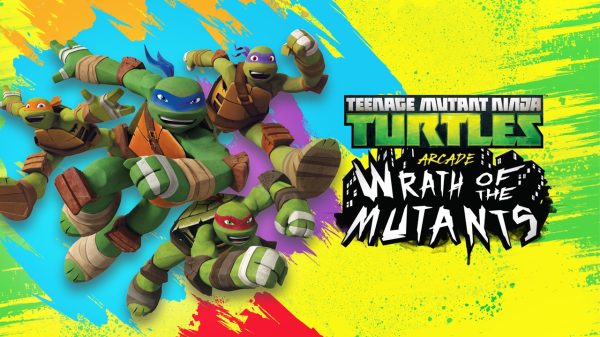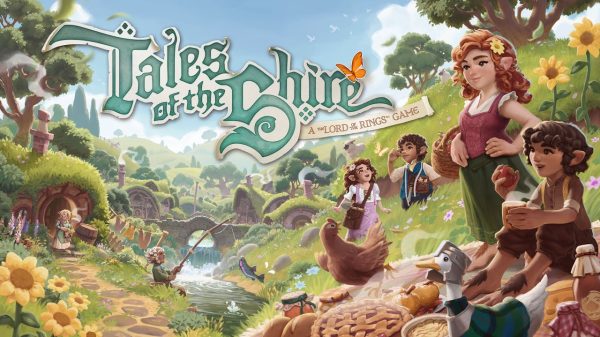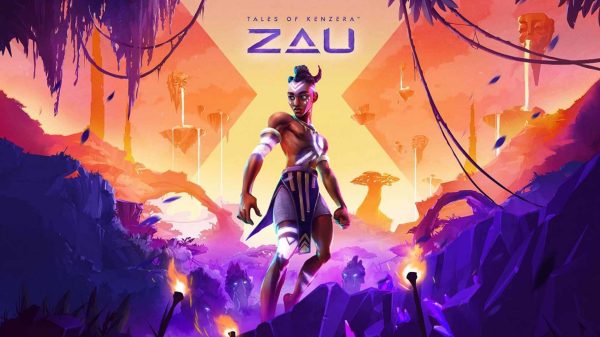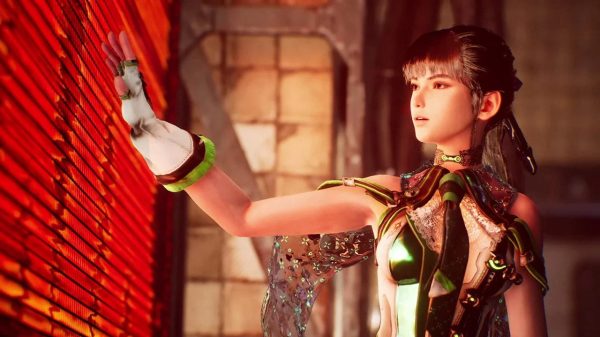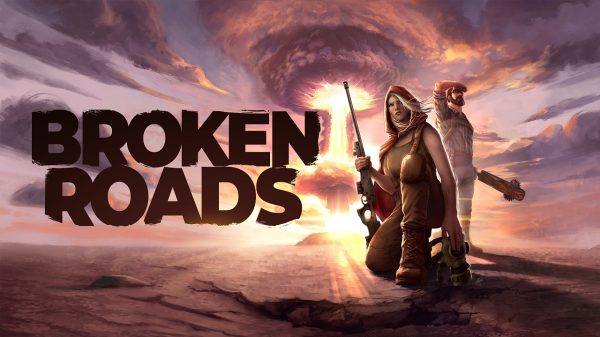I love Metroidvanias. That’s it. That’s the tweet. In all seriousness, I do love Metroidvanias (though admittedly there are arguably more bad ones than good ones) as the genre typically has great game design. One of my favourite games is Hollow Knight, which is almost universally praised for being such a well made exemplar of this type of design. With all this adoration for the genre in mind, I was pretty intrigued with Elderand when it came across my desk. Unfortunately, while the game isn’t exactly bad, it doesn’t quite reach the admittedly high bar set by some of the heavyweights in the genre.
Elderand is set in the titular land of Elderand, one ravaged by death and despair primarily due to the nefarious machinations of Sserthris. Quite simply, you’re a bounty hunter who has been tasked with taking down this evil figure. The story isn’t exactly too important outside of the actual events of the game, as is tradition with the genre – Metroidvanias quite commonly put gameplay first.
It’s here you are immediately met with an art style that is reminiscent of an era long since gone. Doing away with super sharp art that has become so prevalent, Elderand adopts a pixel-art style, much to its success. The use of vivid colours allows for environments to pop and feel wholly unique. Coming from playing the aforementioned Hollow Knight recently, I was not quite expecting such variety in colour (Hollow Knight is pretty but can be quite muted). Some enemy designs are pretty wild too, with one of the first enemies you encounter reminding me of the Murlocs from Warcraft. If you like creative art and lots of colours, this is your game. Even the weapons and armour designs are really cool, also making use of the liberal colour palette.
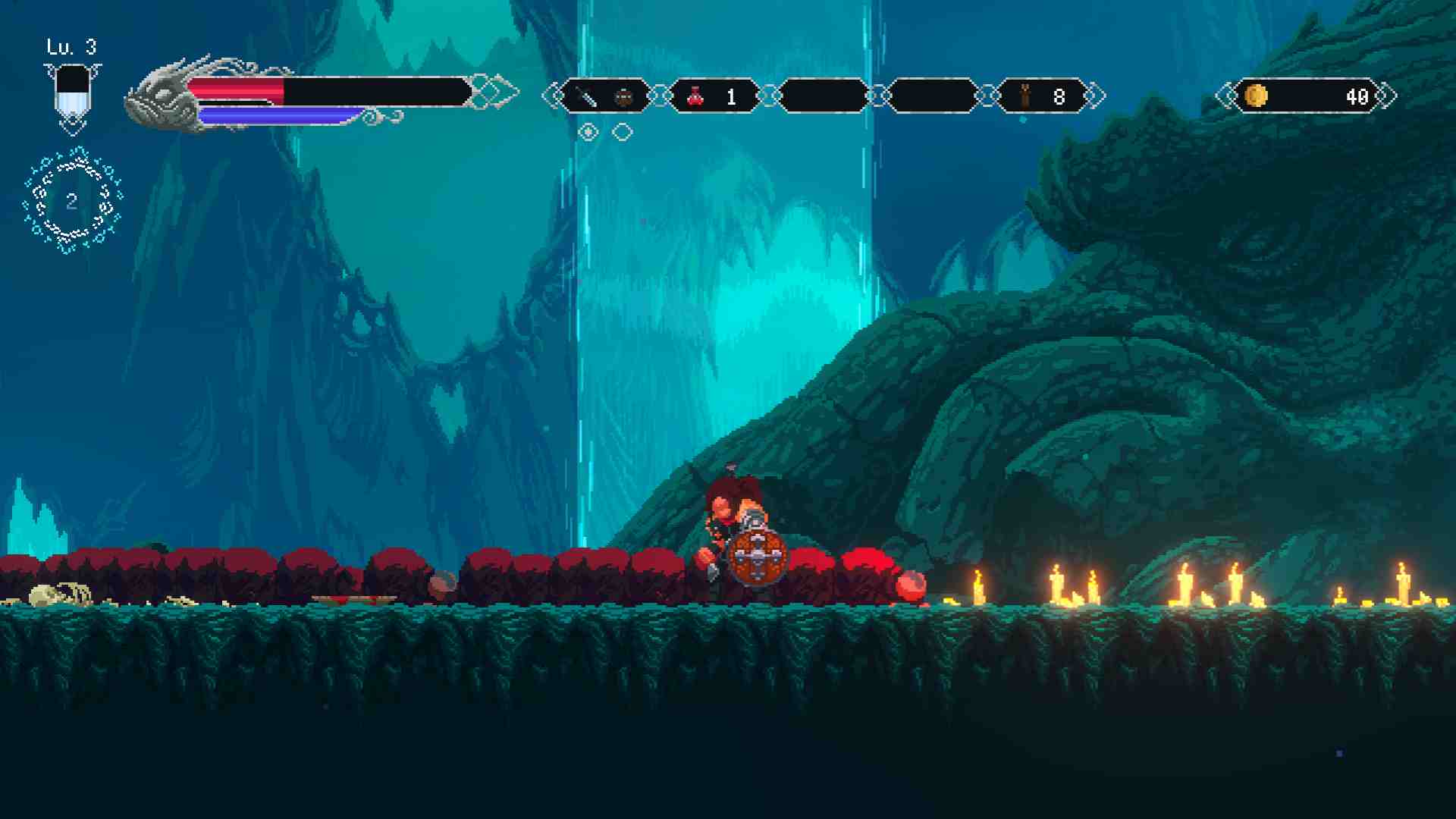
Unfortunately, the main reason I struggled to fully enjoy the game is something you are met with almost immediately – the combat. The biggest problem with the combat is the fact that you cannot move while attacking, which just feels antithetical to Metroidvanias as a whole as they typically boast fluidity in movement while in combat. What this means is that combat ends up with you either just holding a block or standing a certain distance away from enemies to bait specific attacks to get a few hits in. It’s not exactly satisfying and, at some points, can be quite a slog. There was a case where enemies I found myself around took on average ten to twelve hits to take down, which just felt like it was interrupting the flow and pace it was trying to set up with the platforming that was happening just prior to the combat.
In terms of level design, Elderand does well, striking a great balance between allowing immediate exploration while also hiding some secrets behind the enhanced movement abilities that you unlock throughout the game. As is tradition for any Metroidvania game, there is a great amount of interconnectivity between areas and so exploration is very important if you wish to succeed. There are a lot of items, weapons, and armour for you to find which will help dispatch your opponents as fast as possible.
In terms of the feel of the actual movement in the game, I found myself somewhat at odds. It feels very clunky and dated like it was trying to exist in the Metroidvania genre 10+ years ago, almost intentionally disregarding how much movement has improved in the genre. It’s certainly functional, but if I’m playing a Metroidvania game I prefer one where the movement feels more fluid. The traversal does begin to improve as you play through the game and unlock more and more of the movement abilities like the grappling hook item, and my enjoyment definitely began to improve as these abilities were made available. However, it’s still like putting shoe shine on a dusty, uncomfortable, and old pair of shoes when you have a much nicer pair of shoes waiting to be worn.
Back to the combat, the boss fights were actually quite well designed and were the only time where it didn’t explicitly feel the restrictive combat mechanics were a hindrance and instead were more of a teaching tool. They’re also nicely paced such that the bosses have the right amount of aggression to complement the combat, requiring me to actually learn how to counter these bosses as opposed to normal enemies where I just figured out how to get past them with minimal fighting.
Elderand features a stat system that is pretty simple, spread across four familiar core key attributes – vitality, strength, wisdom, and dexterity. Vitality is pretty self-explanatory. Strength increases your damage with melee weapons and your stamina, wisdom increases your magic damage and mana points, and dexterity increases your critical strike chance and damage while also increasing damage from bows, knives, whips, and throwing axes. As you go through the game, fighting enemies and bosses, you will gain experience to level up and so you can allocate points into these stats. This is mostly fine but it introduces some issues as well. When you have a stat system like this, you introduce a very linear path in terms of progression and balance. I’ve mentioned earlier that some enemies take quite a long time to defeat, and this is due in part to this stat system. Now I managed to just grind and level to the point where these enemies no longer felt like they were taking too long to dispatch, but the game inadvertently encourages this when your average enemy can become quite a chore to get past if you’re going to fight them.
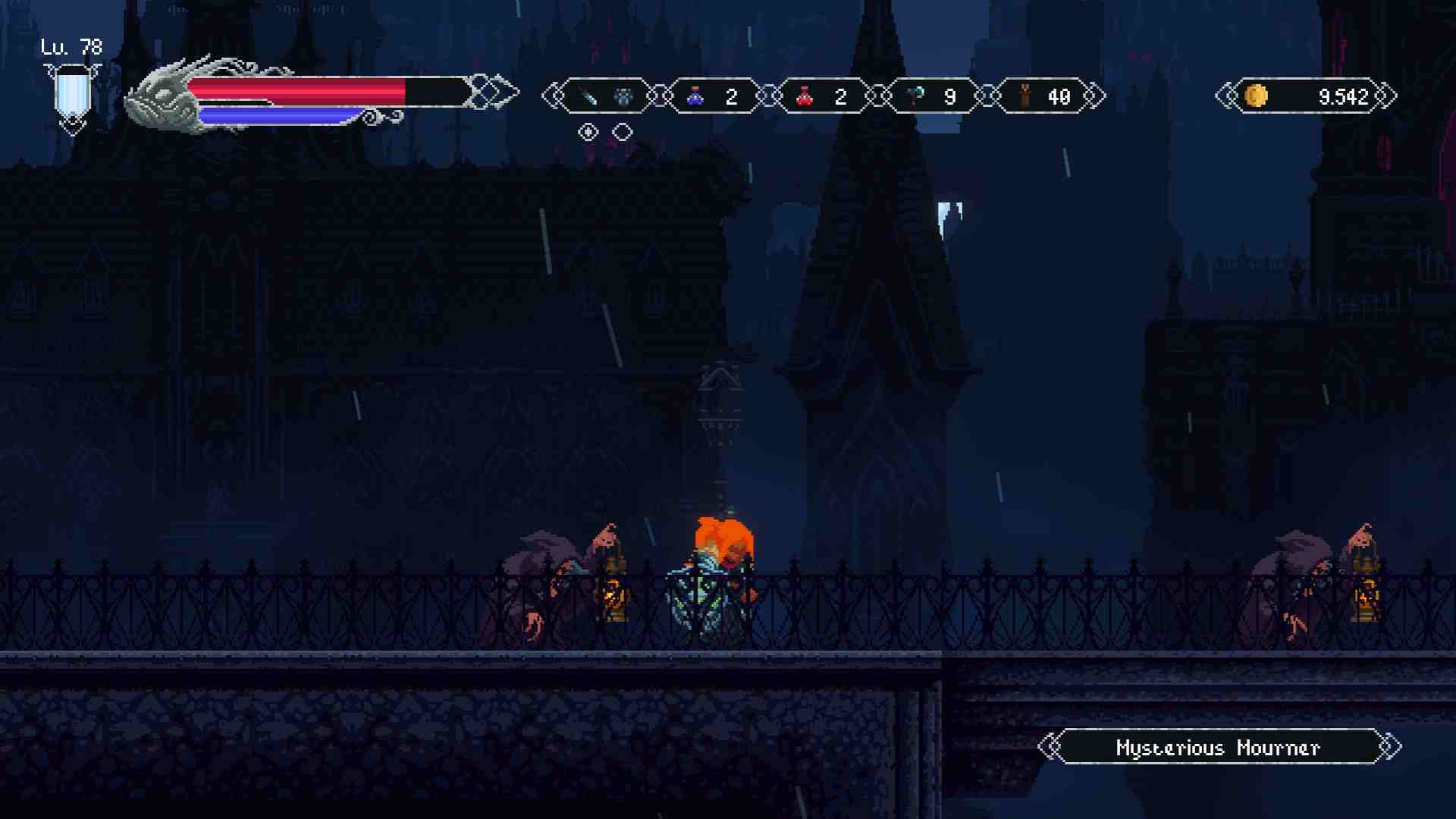
On top of the stat system, there is also a gearing system, with various unique pieces of weapons, armour, and accessories to dress up in. Most gear can be upgraded provided you have found the correct materials out in the field and also have sufficient funds to do so, but the upgrade system is not available to you immediately. You do have to go find the blacksmith’s hammer which can take a little bit given that it is required to have some of the additional movement abilities at your disposal in order for this hammer to be found. Regardless, I did quite enjoy this system as it made me think twice about whether I really wanted to invest in a new weapon or not.
The music and soundscape are also trapped in a bygone era, but this time it is to its credit. I actually very much enjoyed the music as it gave the game a very arcadey feel which absolutely helped soften the blow with some of the game systems that I found myself not really vibing with. Rather than trying to use music to convey atmosphere, Elderand opts for a soundtrack that really makes you feel like you are just jamming out in a video game, and what could be more important than that? Cavorting around attacking monsters and swinging across vast distances while vibing to some banging tunes simply makes sense. That’s all it is and that is all it really needed to be. The soundtrack doesn’t get caught up in trying to be super nuanced and subtle, it just does a simple job incredibly well.
Final Thoughts
Elderand is by no means a bad game, but it does feel dated in the ebb and flow of its gameplay, and you can’t help but yearn for more. The combat feels like it is breaking the pace that it tries to set with its platforming, the movement feels incredibly stiff, and the reliance on the game’s stat system has created a progression path that almost encourages grinding for the average player. It absolutely has some highlights with the music, the art, and the bosses, but unless you are in desperate need for a new Metroidvania, there are better ones out there.
Reviewed on PC // Review code supplied by publisher
Click here for more information on WellPlayed’s review policy and ethics

- Mantra / Sinergia Games
- Graffiti Games
- PS5 / Xbox Series X|S / Nintendo Switch / PC
- February 16, 2023



Jordan lives and breathes Dark Souls, even though his favourite game is Bloodborne. He takes pride in bashing his face on walls and praising the sun. Hailing from the land of tacos, he is the token minority for WellPlayed.






